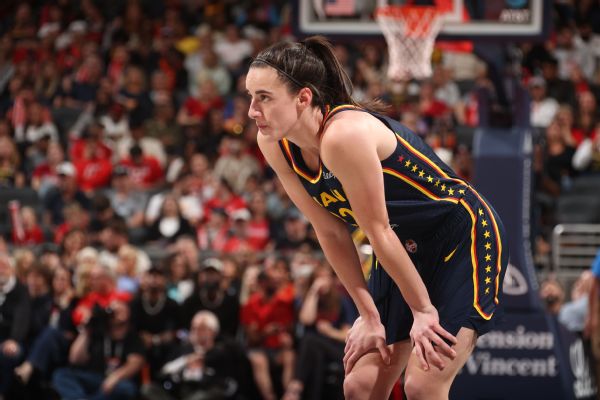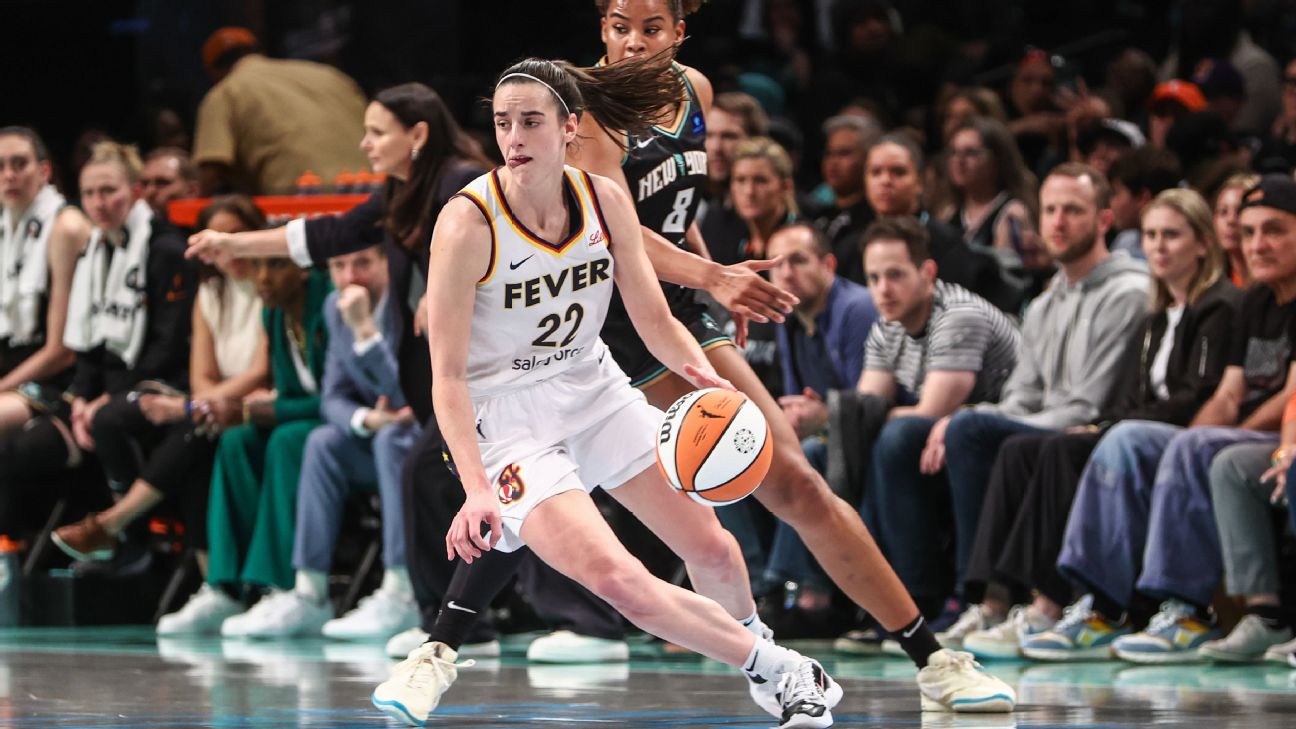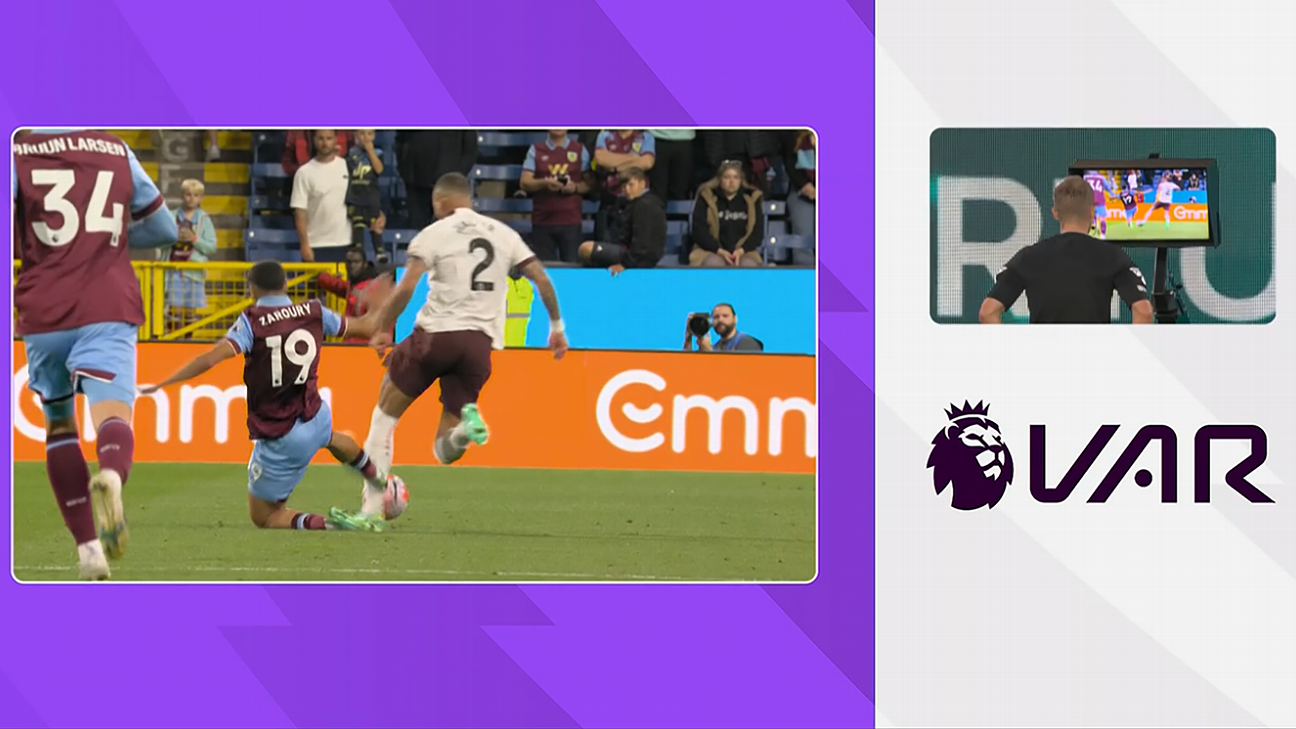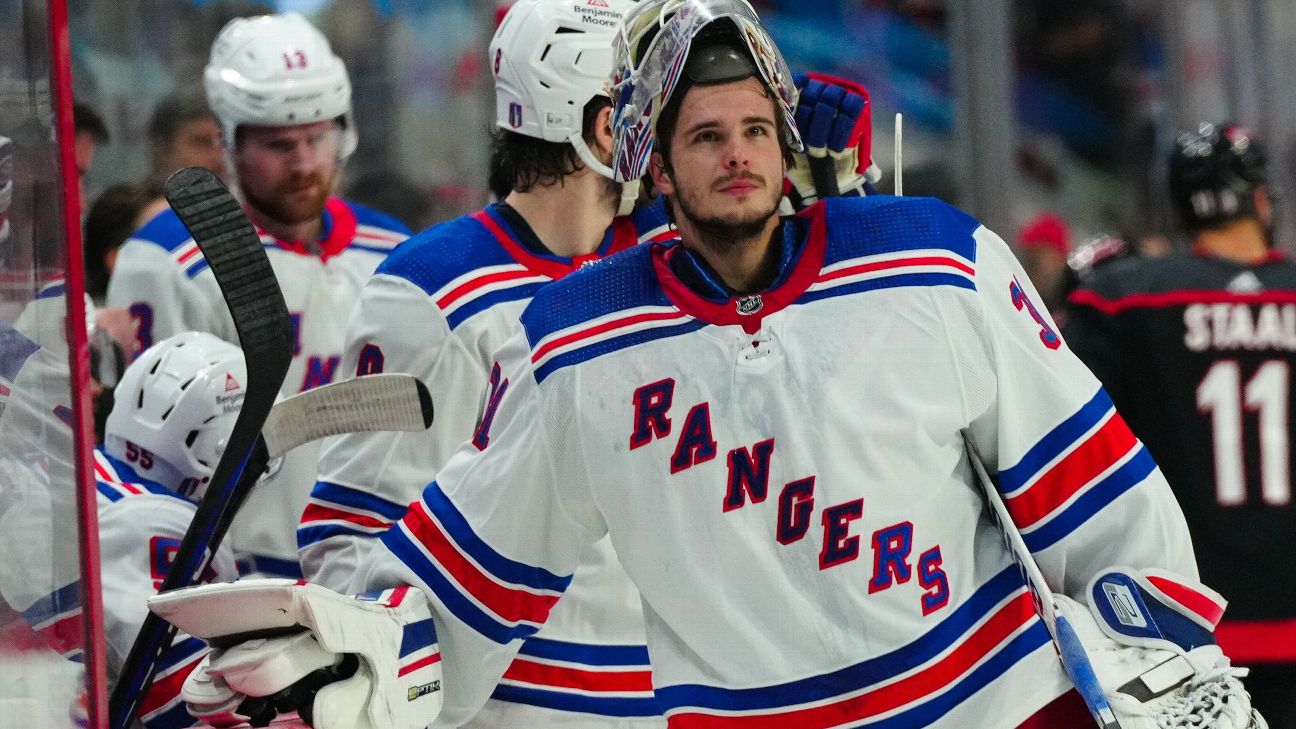![Vasiliy Lomachenko and George Kambosos 20240509 [1296x729]](https://a.espncdn.com/photo/2024/0509/r1330625_1296x729_16-9.jpg)
New York Giants QB Tommy DeVito still has a chip on his shoulder
The 135-pound weight class is once again in the spotlight. The division has shifted dramatically since Devin Haney moved to 140 pounds, leaving a trail of vacated belts and opportunity for top contenders to claim them.
Saturday will offer a new chapter for living legend Vasiliy "Hi-Tech" Lomachenko, who steps into the ring at 36 years old in Australia, where their autumn season brings shorter days and longer nights, a metaphor for the dwindling opportunities in Lomachenko's storied career. Yet, Lomachenko's advanced career stage does little to cast a shadow over his fighting spirit, as he will be looking to reclaim the vacant IBF lightweight title against George "Ferocious" Kambosos Jr., the former lightweight unified champion from Sydney (ESPN, ESPN+, 10 p.m. ET).
This bout is beaming with "styles make fights" poetic layers. In November 2021, Kambosos defeated Teofimo Lopez, who had handed Lomachenko his second loss as a professional in 2020. Lomachenko's longtime, thus-far unattained goal of further etching his name in boxing history by claiming the undisputed lightweight championship is becoming less and less realistic. Yet, his aspiration glows, as he is willing to travel Down Under for one piece of the undisputed throne. A victory in Australia would move him closer to his dream.
A look at what could be at stake, aside from the titleTop Rank, which promotes Kambosos and Lomachenko, is preparing another do-not-miss showdown in the lightweight division. On May 18 in San Diego, a clash to add clarity to the division will take place, as Emanuel Navarrete (38-1-1, 31 KOs) of Mexico, a three-division world champion, looks to extend his legacy with a fourth division title. He faces Ukraine's hard-nosed 2016 Olympic silver medalist Denys Berinchyk (18-0, 9 KOs) for the vacant WBO title.
Any boxing fan would believe that the winners of these two matchups are on a collision course, setting the stage for a unified showdown. Adding yet another layer to this saga is the WBC lightweight champion, Shakur Stevenson, who faces Artem Harutyunyan on July 6 in his last bout in his contract with Top Rank. Sources say Stevenson will step into free agency. Still, I think business is business, and Stevenson would be willing to put his title on the line to face the unified champion in early 2025.
Meanwhile, Gervonta "Tank" Davis (29-0, 27 KOs) was elevated to full WBA lightweight champion following Haney's departure. He is preparing to face southpaw undefeated top lightweight contender Frank Martin (18-0, 12 KOs) on June 15 at the MGM Grand Garden Arena Las Vegas.
The 135-pound division is not just promising but exciting. For Lomachenko (17-3, 11 KOs), the path to undisputed greatness seems straightforward. At the tail end of his career, the motivational furnace could be rekindled by the clarity of his quest. Lomachenko's position looks strengthened, but for him to capture the most complicated title of all, "undisputed," his execution must be flawless.
Lomachenko and his technical footwork masteryBeing in the right place at the right time can mean many things in boxing. It can refer to the perfect time to take on a fight. Or the appropriate time to move up in weight. However, it is vital to understand the importance of it in this context: positioning inside the ring.
Perfect positioning helps a fighter throw punches effectively and retreat to safety on defense. It also gives a boxer an edge over the opponent by making it easier to predict what's coming next, and helps the boxer save energy and make quick decisions during a fight. By being in the correct position, fighters can decide instantly whether to attack or defend.
Some movements can be spontaneous, but the fighter needs to be in the right place to attack and also react to what the opponent is doing. Where and how fighters stand inside the ring determines how effectively they can punch and avoid shots.
Lomachenko is the king of technical footwork mastery, among the best southpaw practitioners in history. His footwork in the ring is like Picasso's precise strokes on the canvas, creating a masterpiece with every step he takes. It's a creation honed through childhood dedication and strategic evaluation by his father and trainer, Anatoly Lomachenko, who enrolled his son in Ukrainian-style dancing classes to improve his footwork and coordination.
Kambosos (21-2, 10 KOs), on the other hand, fights from an orthodox stance, and the battle between southpaw and orthodox has always been the ultimate fight for positioning in boxing. This is especially true for orthodox fighters, who sporadically contend or spar with southpaws. Notably, an increasing number of southpaws are surfacing as visionary trainers to get right-hand-dominant fighters to adopt the southpaw stance, wisely placing their dominant hand forward for a tactical edge. This change capitalizes on unfamiliarity, as most boxers are right-handed and strategize out of the orthodox stance.
Having experience as an orthodox fighter myself and having fought one of the greatest southpaws of all time, the legendary eight-division world champion Manny Pacquiao, I witnessed firsthand the unprecedented blend of speed, agility and knockout power that forged his fighting nature. However, what set Pacquiao apart was not his natural gifts but the advantage cemented by his southpaw stance, which enhanced his dynamic style with an extra layer of complexity.
Lomachenko devours his opponents through indirect upper-body feints, angles, footwork in and out movements, actively applying pressure while implementing pre-slips to set a trap while observing the positional habits of his opponents. He provides subtle level changes to put forth a pop-up surprise attack.
However, all his tactics are put forth to gain the positional advantage in the battle between righty vs. lefty. The tactic most advantageous to Lomachenko is the front and back footstep shuffle, getting around on the side of his opponents. The front foot shuffle is a maneuver that attacks the weak side angle on a right-hander (left side) -- positioned around the lead hand (left hand) of the orthodox fighter. In this position, Lomachenko is safe offensively and defensively, mounting an attack in total tranquility.
Lomachenko mentally dismantles many opponents with a mesmerizing display of indirect movements, seamlessly applying pressure while setting traps and observing his opponents' positional tendencies, information he gets within the first 30 seconds of a round and executes in a future round. Known as a slow starter, Lomachenko elevates fundamental habits, tactics, positional awareness and defensive responsibility implementations, downloads them and then goes to work.
Employing subtle level changes, he lures his adversaries into a false sense of security before unleashing a surprise attack. Lomachenko operates with offensive strikes provided with defensive coverage, launching his assaults accurately and precisely.
How can Kambosos win?Every fighter, even the best, has hidden weaknesses that can be detected by only the trained eye. These weaknesses can exist even within a fighter's strengths. Lomachenko, known for his exceptional footwork, still displays vulnerability there. Despite his skill in positioning, there are situations where he can be pressed out of position.
When disengaging, Lomachenko tends to move straight back, bringing his feet together involuntarily and leaving himself in a compromised position where his offense becomes ineffective, allowing opponents to attack without hesitation. Lomachenko performs better when moving forward rather than backward. In his losses, he was not typically the aggressor. In his first loss, against Orlando Salido, the Mexican veteran became victorious through his experience, bodywork, pressure and, to be honest, low blows. Kambosos can take a page from that plan.
Lomachenko carries both guards high, exposing his lower body to be targeted. Haney often exploited the opening to Lomachenko's exposed midsection.
Kambosos possesses a blend of underrated hand speed, explosiveness, quickness and counterpunching skills. His explosive first step allows him to close the gap effectively, and he fearlessly unleashes combinations, backed by the assurance of his solid chin.
What Kambosos should improve against LomachenkoIn a recent battle against southpaw Maxi Hughes, while not delivering his best performance, Kambosos managed to secure a controversial decision victory. Kambosos' experience against southpaws has been somewhat limited, with Hughes being only the second left-handed fighter he has faced in his professional career.
Kambosos' fighting style often features low guard positions, exposing him to vulnerabilities such as straight punches, pull-counters and lateral traps from his opponents. He seems to lack a deep understanding of the conventional strategies when facing a southpaw, including recognizing the need for lead hand and foot dominance.
His tendency to consistently move to the right against a southpaw positions him toward the southpaw's straight left rather than seeking to secure the advantageous weakside angle. By persistently moving to the right, Kambosos inadvertently offers his opponent an opportunity to exploit the weakside position. Rather than using the more traditional tactics of moving left and delivering a well-placed right cross, Kambosos often opts for a less effective double right-hand cross, compromising his balance and leaving himself susceptible to counters.
Techniques such as the 2-1 combination and the pull-counter straight left can be effective against Kambosos' tendencies and approach when facing southpaw opponents.
Who wins?Very simply put, Lomachenko will win a unanimous decision to regain one of his titles.













